Top 10 Best Surfing Destinations in the World
Mar 3, 2025
1. Pipeline, Oahu, Hawaii, USA
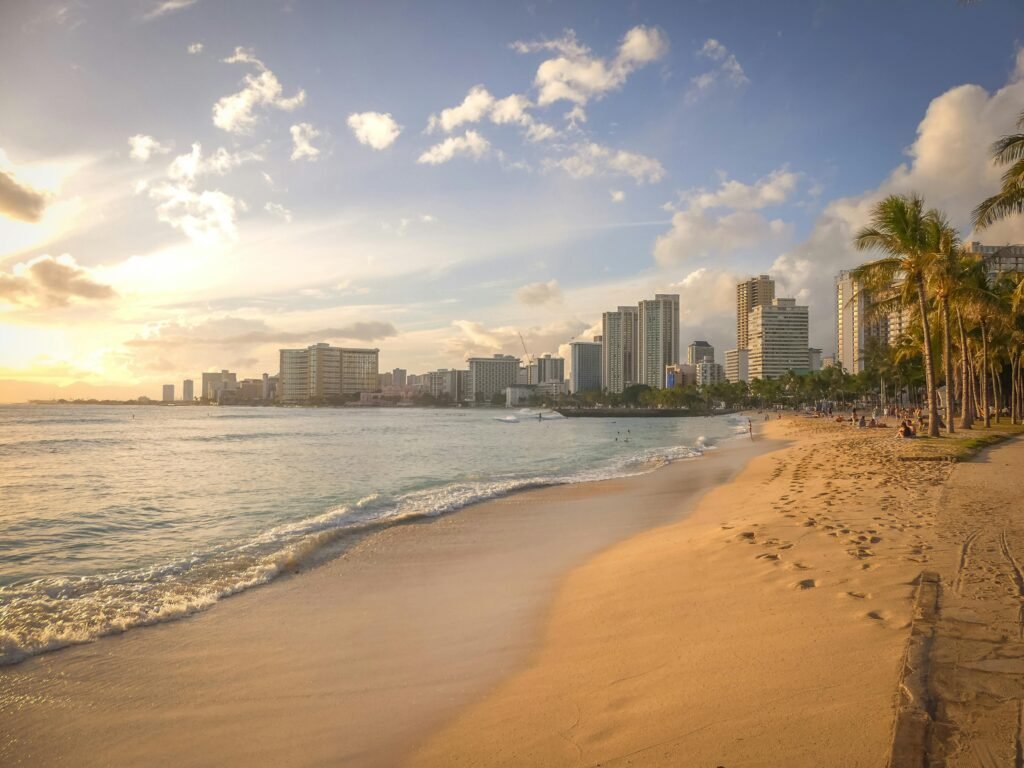
Introduction
Pipeline, located on the North Shore of Oahu, Hawaii, is one of the most famous and revered surf breaks in the world. Known for its perfect, barreling waves and dangerous reef, Pipeline has become a proving ground for the world’s best surfers. This iconic wave is not just a surf spot—it’s a symbol of the ultimate challenge in surfing.
Pipeline was first surfed in 1961 by Californian surfer Phil Edwards, but back then, it was considered nearly impossible to ride. Over the decades, pioneers such as Gerry Lopez (nicknamed “Mr. Pipeline”) helped shape the way surfers approached the wave. Today, Pipeline remains a rite of passage for elite surfers, pushing the limits of the sport.
Pipeline is unique because of its powerful, hollow barrels that break over a razor-sharp volcanic reef just a few feet below the surface. The wave consists of several distinct sections:
- First Reef – The most commonly surfed and iconic part of Pipeline, known for its perfect, heavy barrels. This is where most competitions take place.
- Second Reef – A bit further out, Second Reef breaks when swells are bigger (10-15 feet+), producing even larger and more powerful waves.
- Third Reef – The furthest out, this section only breaks on massive swells (20 feet+), creating enormous, terrifying waves.
Pipeline also has a sister wave known as Backdoor, which breaks to the right and offers a faster, more technical ride. While Pipeline (left-breaking) is more predictable, Backdoor can be even more dangerous due to its unpredictable nature and shallow sections.
Pipeline is notorious for being one of the deadliest waves in the world. Several key factors make it extremely challenging:
- Shallow Reef – The sharp, uneven volcanic reef is only a few feet below the surface. Many surfers have been seriously injured (or worse) from hitting the reef.
- Heavy Lip – The lip of a breaking Pipeline wave is incredibly thick and powerful, capable of slamming surfers onto the reef with enormous force.
- Fast and Hollow Waves – Pipeline’s waves break extremely quickly, forming perfect tubes, but leaving little room for error.
- Crowded Lineup – Due to its fame, Pipeline is always crowded with expert surfers, making it difficult for newcomers to catch waves.
- Strong Currents – The rip currents at Pipeline can be very strong, pulling surfers into dangerous positions.
Pipeline comes alive during Hawaii’s winter surf season (November – February). This is when the North Pacific generates massive swells, creating world-class waves at Pipeline.
- December – January: The most consistent and biggest swells.
- February – March: Slightly smaller but still powerful.
- April – October: Typically flat or small waves, not suitable for serious Pipeline surfing.
Pipeline is home to some of the most prestigious surfing competitions in the world, where only the best surfers dare to compete:
- Vans Pipe Masters – The most iconic event at Pipeline, held annually since 1971.
- Billabong Pro Pipeline – The season-opening event for the World Surf League (WSL) Championship Tour.
- Da Hui Backdoor Shootout – A specialty event focusing on big barrels and local Hawaiian surfers.
- Volcom Pipe Pro – A highly respected event showcasing the next generation of Pipeline chargers.
Winning at Pipeline is considered one of the greatest achievements in professional surfing, with past champions including Kelly Slater, John John Florence, Andy Irons, and Gabriel Medina.
Pipeline is more than just a wave—it has shaped modern surf culture.
- It has been featured in countless films, documentaries, and surf magazines.
- Many legendary surfers have built their reputations based on their performances at Pipeline.
- The wave has influenced board design, with many modern shortboards and guns being shaped specifically for surfing Pipeline’s unique barrels.
If you’re not a surfer but still want to witness the power of Pipeline, the best place to watch is Ehukai Beach Park. From here, you can see surfers taking on the massive, barreling waves up close.
- Best time to watch: Early morning (less wind, cleaner waves).
- What to bring: Binoculars, sunscreen, a camera, and a respect for the local surf culture.
For those brave enough to paddle out at Pipeline, here are some survival tips:
- Be an Expert Surfer – Pipeline is NOT for beginners. You should have years of experience surfing heavy reef breaks before attempting Pipeline.
- Respect the Locals – Hawaiian surfers have a strong local presence at Pipeline. Wait your turn and don’t drop in on someone else’s wave.
- Know the Lineup – Study the wave, the currents, and the different takeoff spots before paddling out.
- Use the Right Board – Most Pipeline surfers use a 6’6” to 7’6” step-up board, built for speed and control.
- Be Prepared for Wipeouts – If you fall, stay calm, cover your head, and go with the flow to avoid hitting the reef.
Some of the greatest surfers of all time have made their mark at Pipeline:
- Gerry Lopez (“Mr. Pipeline”) – One of the first surfers to master Pipeline’s barrels in the 1970s.
- Kelly Slater – 11-time world champion and multiple-time Pipe Masters winner.
- Andy Irons – Rival of Kelly Slater, known for his fearless surfing at Pipeline.
- John John Florence – Local North Shore legend and multiple-time Pipe champion.
- Jamie O’Brien – Grew up near Pipeline and is known for his innovative and fearless approach to surfing there.
Pipeline is the most legendary wave in the world, offering the ultimate test for surfers. Its breathtaking beauty, unmatched power, and dangerous nature make it one of the most respected surf spots on the planet. Whether you’re a pro surfer or a spectator, Pipeline delivers an unforgettable experience and continues to be the heart of Hawaiian surfing culture.
2. Teahupo’o, Tahiti, French Polynesia
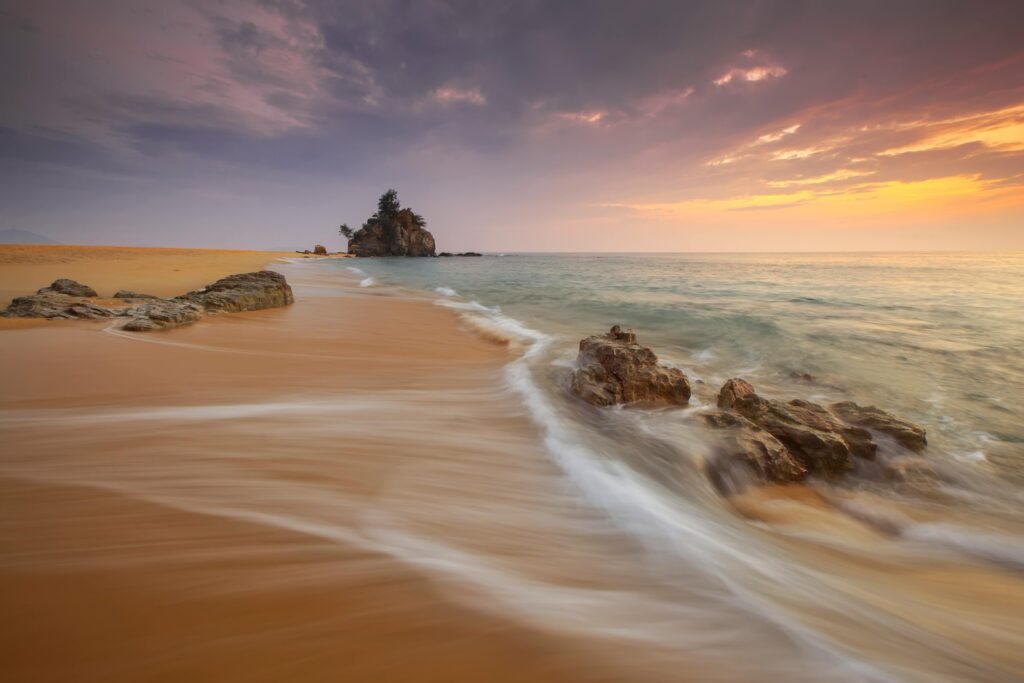
Introduction
Teahupo’o, located on the southwest coast of Tahiti, French Polynesia, is one of the most powerful and feared waves in the world. Known for its massive, glassy barrels and extremely shallow reef, Teahupo’o (pronounced “cho-po”) is often considered the heaviest wave on the planet. It is a sacred place for Tahitian surfers and a proving ground for the world’s best athletes.
The name “Teahupo’o” roughly translates to “the place of broken skulls”, a reference to its dangerous waves and the sharp coral reef underneath. It remained relatively unknown in the global surf community until 1998, when legendary surfer Laird Hamilton rode what was considered the heaviest wave ever surfed at that time. Since then, Teahupo’o has become one of the most prestigious big-wave surf spots in the world.
Teahupo’o is famous for its thick, hollow barrels that break in deep water and then crash onto a shallow, razor-sharp coral reef. Unlike most waves, which gain height as they grow, Teahupo’o’s wave gains thickness, making it incredibly powerful and deadly.
Why is Teahupo’o so unique?
- Incredibly Thick Waves – Teahupo’o’s wave face is thicker than it is tall, creating monstrous barrels.
- Shallow Reef – The reef is only a few feet below the surface, making wipeouts extremely dangerous.
- Glass-Like Perfection – The waves are often smooth and clean, thanks to Tahiti’s tropical climate.
- Deep Water to Shallow Water Transition – The ocean floor drops off rapidly, allowing swells to explode with full force onto the reef.
Teahupo’o is one of the deadliest waves in the world, even for experienced surfers.
- Extreme Power – The wave’s lip can be as thick as a car, crashing down with enormous force.
- Reef Hazards – The reef is jagged, sharp, and dangerously shallow. Many surfers have suffered serious injuries from hitting the reef.
- Strong Currents – The currents around Teahupo’o can be unpredictable, making it difficult to get back to safety.
- No Escape Route – Unlike other waves, there is no easy way out if you get caught inside.
Teahupo’o has claimed multiple lives, and many surfers have walked away with severe reef cuts, broken bones, and concussions.
Teahupo’o is at its best during the winter season in the Southern Hemisphere (May – October), when large south swells produce waves ranging from 8 to 25 feet (2.5 to 8 meters).
- May – June: Start of the big wave season.
- July – September: Prime season, with massive, perfect barrels.
- October: Swells begin to taper off.
Teahupo’o can break year-round, but smaller swells during the off-season (November – April) make it more accessible to experienced, but non-professional, surfers.
Teahupo’o hosts one of the most prestigious events in professional surfing:
- Tahiti Pro (WSL Championship Tour) – One of the most exciting stops on the World Surf League (WSL) tour, where only the best surfers can handle Teahupo’o’s power.
- Big Wave Challenges – Some of the most historic big-wave sessions have happened at Teahupo’o, often in “Code Red” conditions (when the waves are exceptionally massive and dangerous).
- 2024 Paris Olympics Surfing Event – Teahupo’o will host the surfing competition for the Paris 2024 Olympics, marking it as the first Olympic event held in French Polynesia.
Winning at Teahupo’o is one of the highest honors in professional surfing, with past champions including Kelly Slater, Gabriel Medina, and Andy Irons.
Teahupo’o is located in a remote part of Tahiti, and the wave itself breaks about 1 km (0.6 miles) offshore. To get a good view:
- Boat Tours – The best way to watch the action up close is by taking a local boat tour, which takes you right next to the breaking waves.
- Viewing from Land – There is a small viewing area on the shore, but the waves are far from the beach, making it hard to see clearly without binoculars.
- Best Time to Watch – Early morning, when the conditions are usually cleanest.
Only the most experienced and fearless surfers attempt Teahupo’o. If you’re considering it, here are some survival tips:
- Be Ready for the Heaviest Wave of Your Life – You must have extensive big-wave experience before attempting Teahupo’o.
- Use the Right Board – Most surfers use a tow-in board for massive days and a short, thick step-up board for smaller waves.
- Wear a Helmet and Impact Vest – Many surfers wear protective gear due to the risk of hitting the reef.
- Master the Duck Dive – You need to dive deep and hold your breath to avoid being thrown onto the reef.
- Respect the Locals – The Tahitian surf community is very protective of their wave. Show respect, wait your turn, and don’t drop in on others.
Some of the greatest surfers in history have tamed Teahupo’o’s monster waves:
- Laird Hamilton – Rode the first legendary wave at Teahupo’o in 1998.
- Kelly Slater – One of the most dominant surfers at Teahupo’o, known for his perfect barrel rides.
- Andy Irons – Legendary Hawaiian surfer, famous for his fearless approach at Teahupo’o.
- Gabriel Medina – Two-time world champion, known for his technical tube riding at Teahupo’o.
- Nathan Florence & Koa Rothman – Modern big-wave surfers who continue to push the limits at Teahupo’o.
Teahupo’o is not just a wave—it’s a force of nature. Its combination of perfect barrels, extreme power, and deadly reef make it one of the most respected and feared waves in the world. Whether you’re a big-wave surfer looking to prove yourself or a spectator wanting to witness surfing at its most extreme, Teahupo’o delivers an unparalleled experience.
3. Jeffreys Bay, South Africa
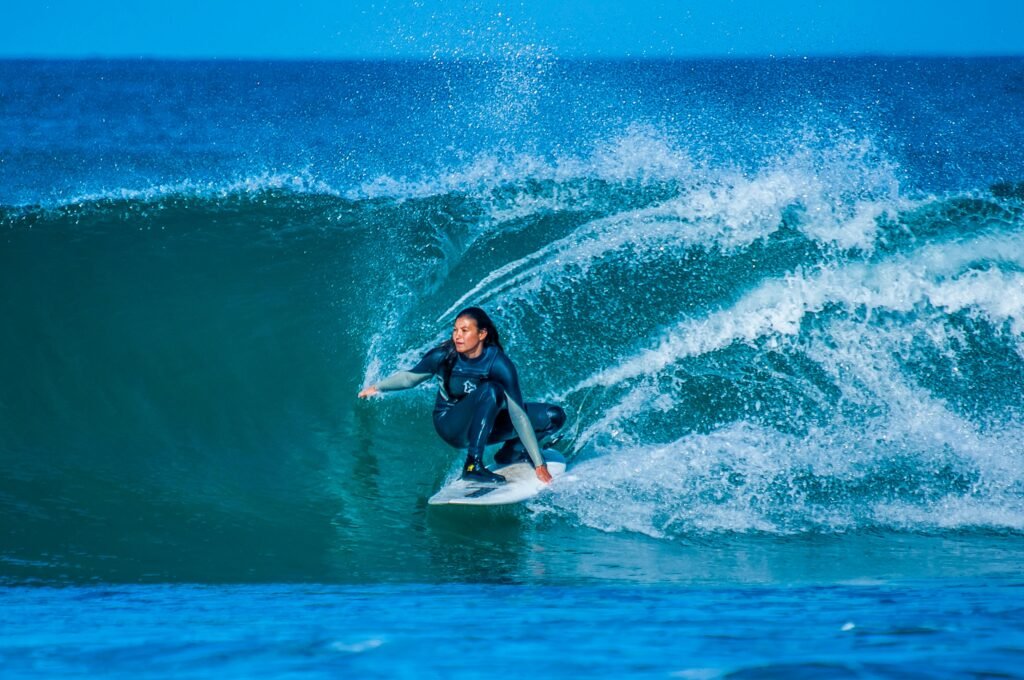
Introduction
Jeffreys Bay (commonly called J-Bay), located on South Africa’s stunning Eastern Cape coastline, is renowned worldwide as one of surfing’s most iconic and beloved destinations. Famous for its exceptionally long, perfectly peeling right-hand waves, Jeffreys Bay has become a paradise for surfers of all skill levels, attracting professional athletes, amateur surfers, and beach-lovers alike.
Jeffreys Bay emerged as a surfing destination in the 1960s, gaining international fame during the 1970s, when surf explorers discovered its incredible waves. The town quickly rose to legendary status, prominently featured in iconic surf films like Endless Summer and drawing the attention of global surf enthusiasts ever since.
Today, J-Bay remains synonymous with perfect surfing conditions, offering a classic surf culture vibe with friendly locals and a relaxed atmosphere.
Jeffreys Bay offers several renowned surf breaks stretching along its coastline, each with unique characteristics and suited to different surfing abilities:
1. Supertubes
- Considered the crown jewel of J-Bay, Supertubes is often called the best right-hand wave on Earth.
- Famous for its exceptionally fast, long, and hollow barrels.
- Hosts annual WSL Championship Tour competitions like the Corona Open J-Bay.
- Ideal for intermediate-to-expert surfers due to the wave’s high speed and powerful sections.
2. Boneyards
- Just above Supertubes, offering a shorter, powerful, hollow wave.
- Best suited for advanced surfers, known for its shallow reef sections.
3. Impossibles
- Fast, challenging, steep wave breaking over reef and rocks.
- Rarely crowded, perfect for skilled surfers seeking excitement and difficulty.
4. The Point
- Located below Supertubes, provides a gentler, more user-friendly wave.
- Great for intermediate surfers, offering long, enjoyable rides and a less critical takeoff.
5. Albatross
- At the top end of the bay, this wave is slower and softer, making it ideal for beginners and longboarders.
6. Kitchen Windows
- A mellow reef break located near the main beach.
- Perfect for beginners and intermediate surfers.
Several factors combine to create Jeffreys Bay’s world-renowned surf conditions:
Consistent Swell:
- Receives regular swell from the Indian Ocean, producing year-round surf conditions.
Long, Smooth Waves:
- J-Bay is celebrated for its exceptionally long rides, with some waves allowing surfers to ride over 300 meters continuously.
Clean Offshore Winds:
- Predominantly offshore southwest winds groom the waves, producing beautifully clean, glassy conditions.
Perfectly Structured Point Break:
- Jeffreys Bay’s natural rock reef points create well-defined waves that peel consistently along the coast.
Jeffreys Bay is surfable year-round, but the prime season is during the Southern Hemisphere winter months (May – September):
- Peak Season (June – August):
- Most consistent swell, powerful waves, and frequent offshore winds.
- Best period for advanced surfers seeking classic Supertubes conditions.
- Shoulder Season (April, May, September, October):
- More manageable waves and less crowded line-ups.
- Ideal time for beginners and intermediate surfers.
Jeffreys Bay regularly hosts prestigious international surf events, most notably:
Corona Open J-Bay (WSL Championship Tour event):
- Attracts the world’s top surfers, such as Kelly Slater, Mick Fanning, Jordy Smith, and Gabriel Medina.
- Famous for iconic moments, like Mick Fanning’s close encounter with a great white shark during the 2015 final, capturing global media attention.
Local & Regional Competitions:
- Numerous South African championships and local contests held annually, celebrating grassroots talent.
Jeffreys Bay exudes an authentic and laid-back surf town atmosphere:
Friendly Locals:
- Warm-hearted, welcoming community supportive of surfing tourists.
Surf Shops and Industry:
- Home to numerous surf shops, including factory outlets from famous brands (Billabong, Rip Curl), offering quality gear at affordable prices.
Surf Cafés & Restaurants:
- Cozy beachfront cafés, vibrant restaurants, and chilled-out coffee spots line the streets, perfect for relaxation post-surf.
Environmental Awareness:
- Active local surf community committed to marine conservation and environmental preservation.
Respect the Locals:
- The line-up can be crowded during peak conditions. Respect local etiquette, wait your turn, and don’t drop in.
Correct Equipment:
- Bring a variety of boards; most surfers prefer fast, maneuverable shortboards or mid-length boards designed for fast, peeling waves.
Wetsuit Necessity:
- The water can be chilly, especially during peak season (15°C–19°C). A quality 3/2mm wetsuit is highly recommended.
Be Aware of Marine Life:
- J-Bay is known for occasional shark sightings. Surf with others, heed local advice, and pay attention to shark alerts.
Several surfers are strongly associated with Jeffreys Bay and its legendary waves:
Jordy Smith:
- South Africa’s top professional surfer, renowned for his fluid style and powerful surfing at Supertubes.
Mick Fanning:
- Multiple-time WSL World Champion, famously involved in the dramatic shark encounter at J-Bay in 2015.
Shaun Tomson:
- Legendary South African world champion, pioneered aggressive tube-riding techniques at Jeffreys Bay in the 1970s and 80s.
Jeffreys Bay offers plenty for visitors who don’t surf:
- Beaches & Swimming: Beautiful, spacious beaches suitable for sunbathing and swimming.
- Wildlife Watching: Close proximity to nature reserves and parks (such as Addo Elephant Park and Tsitsikamma National Park).
- Adventure Activities: Horse riding, sandboarding, hiking, whale watching, and shark-cage diving.
Jeffreys Bay is a timeless destination, capturing the essence of surfing’s soulful culture and thrilling waves. Its consistent perfection, welcoming atmosphere, and legendary history make it a bucket-list destination for every surfer and ocean lover. Whether you’re chasing the barrel of a lifetime at Supertubes or enjoying a mellow surf session at The Point, Jeffreys Bay promises an unforgettable experience.
4. Uluwatu & Padang Padang, Bali, Indonesia
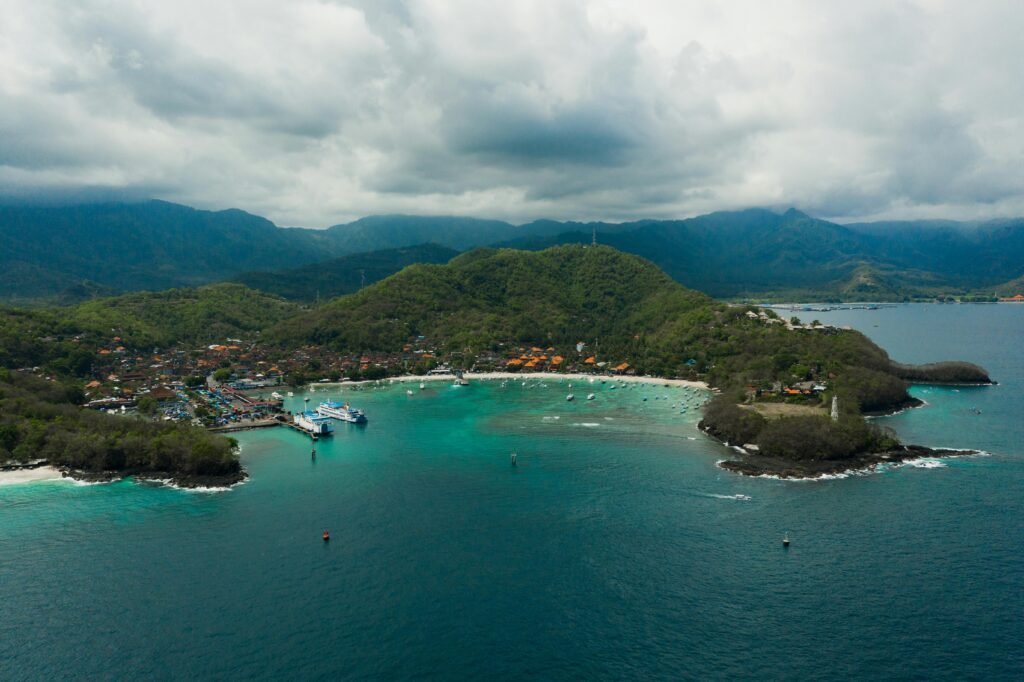
Introduction
Uluwatu and Padang Padang, located on the Bukit Peninsula in Bali, Indonesia, are iconic surf destinations renowned globally for their stunning scenery, world-class waves, and rich surf culture. Known for their dramatic cliffside settings, crystal-clear waters, and perfect barrels, these spots attract surfers from around the globe.
1. Uluwatu
Uluwatu, one of Bali’s original surf discoveries, is a legendary reef break famous for its consistent, powerful waves, stunning cliffs, and iconic sunsets. It’s often considered the heart of Balinese surfing.
Wave Characteristics of Uluwatu
Uluwatu is composed of multiple distinct wave sections, each offering a different experience:
Temples
- Long left-hand wave, powerful and hollow during mid to high tide.
- Ideal for intermediate to advanced surfers.
The Peak
- Offers consistent and powerful barrels, suitable for experienced surfers.
- Famous for its fast-breaking waves and hollow tubes.
Racetracks
- Produces fast, steep, and hollow waves ideal for advanced surfers looking for long barrels and challenging sections.
Outside Corner
- Only breaks on large swells (8 feet+), offering big-wave surfing opportunities for highly experienced surfers.
Best Surfing Conditions for Uluwatu
- Best Season: April to October (dry season).
- Ideal Conditions: South or southwest swells, offshore southeast winds.
- Skill Level: Intermediate to expert.
Surfing Hazards at Uluwatu
- Sharp Coral Reef: Just below the surface, posing significant risk of injury.
- Strong Currents and Rips: Especially during large swells.
- Crowded Lineups: Popularity means lots of skilled surfers competing for waves.
Padang Padang – Bali’s Pipeline
Padang Padang, located just a few kilometers north of Uluwatu, is often called the “Indonesian Pipeline,” referring to Hawaii’s famous Pipeline. It’s one of the most beautiful and dangerous left-hand barrels in the world.
Wave Characteristics of Padang Padang
Padang Padang is world-renowned for its heavy, barreling waves:
- Left-Hand Barrel: Powerful, hollow, extremely challenging wave.
- Shallow Reef: Breaks directly over sharp coral reef, demanding precision and courage from surfers.
- Short Ride but Perfect Barrel: Known for producing a perfect tube ride, despite being shorter than Uluwatu.
Padang Padang: Two Surf Breaks
Padang Padang (Main Break)
- Nicknamed “Bali’s Pipeline”, famous for its intense barrels. Only breaks on large southwest swells (6-12 feet).
- Best suited for highly skilled surfers.
Padang Padang Rights (Baby Padang)
- Gentler, friendlier reef break ideal for beginners and intermediate surfers.
- Offers consistent smaller waves, making it a great learning spot.
Surfing Seasons and Conditions
Uluwatu and Padang Padang experience two main seasons:
Dry Season (April – October)
- Prime surf season, offering consistent swells, offshore winds, and optimal surfing conditions.
- Peak months: June through August, with perfect, powerful waves.
Wet Season (November – March)
- Typically smaller waves and less consistency.
- Still surfable but often less intense, better suited for intermediate surfers.
Famous Competitions
- Rip Curl Cup Padang Padang
- Prestigious invitational event, showcasing elite barrel-riding skills in Padang Padang’s massive tubes.
- Uluwatu Single Fin Classic
- Celebrates traditional surfing and style, held annually at Uluwatu.
Local Surf Culture
Uluwatu and Padang Padang have vibrant surf communities deeply connected to Balinese culture:
- Strong respect for local surfers and traditions.
- Surf culture mixes seamlessly with Hindu temples, cliffside cafes, and artistic expression.
Tips for Surfing Uluwatu & Padang Padang
- Choose the Right Spot: Match your skills to the wave; beginners and intermediates should opt for Baby Padang or smaller Uluwatu conditions.
- Respect Local Surfers: Balinese surfers hold strong local traditions. Be patient and courteous in the lineup.
- Gear Up Correctly: A good reef-bootie and a suitable board designed for powerful reef breaks are essential.
- Check Tides and Swells: Low tide is shallow and risky; mid-to-high tide is typically safer for both spots.
Spectator and Traveler Experience
- Both Uluwatu and Padang Padang offer spectacular viewpoints from cliffs above the surf breaks, making it ideal for photography and sightseeing.
- Nearby attractions include the famous Uluwatu Temple, traditional Balinese ceremonies, and lively local eateries serving authentic Balinese dishes.
Famous Surfers at Uluwatu & Padang Padang
- Made Lana & Rizal Tandjung (Local Indonesian legends).
- Kelly Slater, John John Florence, Mason Ho, and Jamie O’Brien have all famously surfed these waves, demonstrating their global prestige.
Conclusion
Uluwatu and Padang Padang represent the pinnacle of Indonesian surfing: breathtaking scenery, powerful waves, and rich surf culture. For surfers seeking the thrill of world-class barrels or travelers looking to experience Bali’s mesmerizing coastal beauty, these two surf breaks offer an unforgettable tropical surfing paradise.
5. Gold Coast, Australia
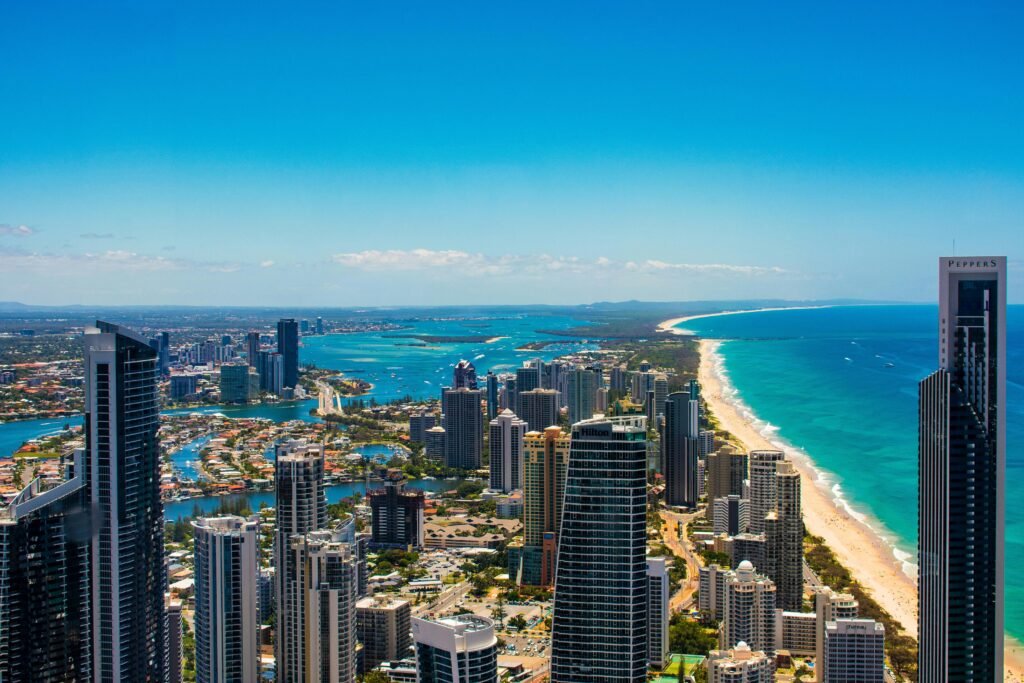
Introduction
Jeffreys Bay in South Africa and Pipeline in Hawaii might be legendary, but Jeffreys Bay’s Southern Hemisphere cousin, Australia’s Gold Coast—particularly spots like Snapper Rocks and Kirra—is equally iconic. Known for consistently perfect, peeling, and world-class right-hand point breaks, the Gold Coast is one of the most beloved surfing destinations globally, attracting professional surfers, beginners, and beachgoers alike.
Iconic Surf Breaks of the Gold Coast
The Gold Coast’s surf spots are world-renowned for their long, perfectly shaped waves. The most notable breaks include:
- Famous for: Hosting the annual World Surf League (WSL) Quiksilver Pro Gold Coast competition.
- Wave type: Right-hand point break with incredibly long rides and hollow sections.
- Skill level: Intermediate to advanced surfers.
- Known as: The “Queen of Gold Coast breaks.”
- Wave characteristics: Fast, hollow, and barreling waves. Perfect tubes that peel for hundreds of meters.
- Skill level: Advanced surfers, due to the shallow sand bottom and powerful waves.
- Description: Classic right-hand point break offering a perfect combination of barrel sections and maneuverable faces.
- Skill level: Intermediate to expert; a popular spot for competitions and freeriding.
- Wave type: Softer right-hand break, ideal for beginners and longboarders.
- Environment: Popular family-friendly atmosphere and great place for surf lessons.
Why the Gold Coast is a Surfing Paradise
The Gold Coast’s surf conditions are remarkable due to several unique geographical factors:
- Consistent Swells: Receives consistent swells year-round from the Pacific Ocean.
- Protected Coastline: Natural headlands shield the surf spots, creating ideal conditions.
- Warm, Tropical Water: Comfortable water temperatures (around 22-26°C), allowing year-round surfing without heavy wetsuits.
- Perfect Sandbanks: Regularly groomed sandbanks form incredibly long, perfectly-shaped waves.
Surfing Seasons and Conditions
- Peak Season (December – April): Swells from cyclones generate large, consistent, and powerful surf.
- Winter (June–August): Usually smaller swells, but cleaner conditions and offshore winds.
- Shoulder Seasons (April–May and September–November): Ideal for intermediate surfers, with moderate waves and fewer crowds.
Surf Competitions and Culture
The Gold Coast is deeply embedded in surfing culture, frequently hosting world-renowned competitions:
- Quiksilver & Roxy Pro Gold Coast (WSL Championship Tour) – An iconic event at Snapper Rocks, attracting elite surfers and global media.
- Burleigh Pro – A high-level event at Burleigh Heads that showcases emerging surfing talent.
- Kirra Teams Challenge – Local event celebrating Gold Coast’s surf community.
The region has also produced legendary surfers such as Mick Fanning, Joel Parkinson, and Stephanie Gilmore, all world champions who call the Gold Coast home.
Surf Lifestyle and Community
Surfing is central to life on the Gold Coast:
- Vibrant Surf Towns: Coolangatta, Burleigh, and Surfers Paradise are vibrant towns offering surf shops, cafes, boutiques, and nightlife.
- Environmental Consciousness: Strong local emphasis on marine conservation and protecting the surf ecosystem.
- Friendly Locals: Welcoming surf community, blending locals and travelers harmoniously.
Tips for Surfing the Gold Coast
- Respect the Locals: Crowded line-ups require courtesy and patience.
- Choose the Right Spot: Beginners should opt for spots like Currumbin Alley, while advanced surfers challenge themselves at Snapper or Burleigh.
- Watch for Marine Life: Occasional jellyfish (bluebottles) and occasional shark sightings warrant awareness.
- Sunscreen Essential: Strong Australian sun demands high-quality sun protection.
For Spectators and Visitors
The Gold Coast is not only a surfing paradise but also a perfect destination for visitors and spectators:
- Spectacular Views: Scenic coastal paths and headlands provide ideal viewpoints.
- Beach Culture: Lively cafes, restaurants, nightlife, and family-friendly beaches.
- Adventure Activities: Hiking, diving, fishing, theme parks, and wildlife sanctuaries nearby.
Conclusion
The Gold Coast stands out as one of surfing’s most iconic and cherished destinations, combining consistent waves, incredible scenery, and a thriving surf culture. Whether you’re catching waves at Snapper Rocks, enjoying a laid-back session at Currumbin Alley, or simply soaking up the atmosphere, the Gold Coast is truly a surf paradise that caters to everyone from beginners to world champions.
6. Trestles, California, USA
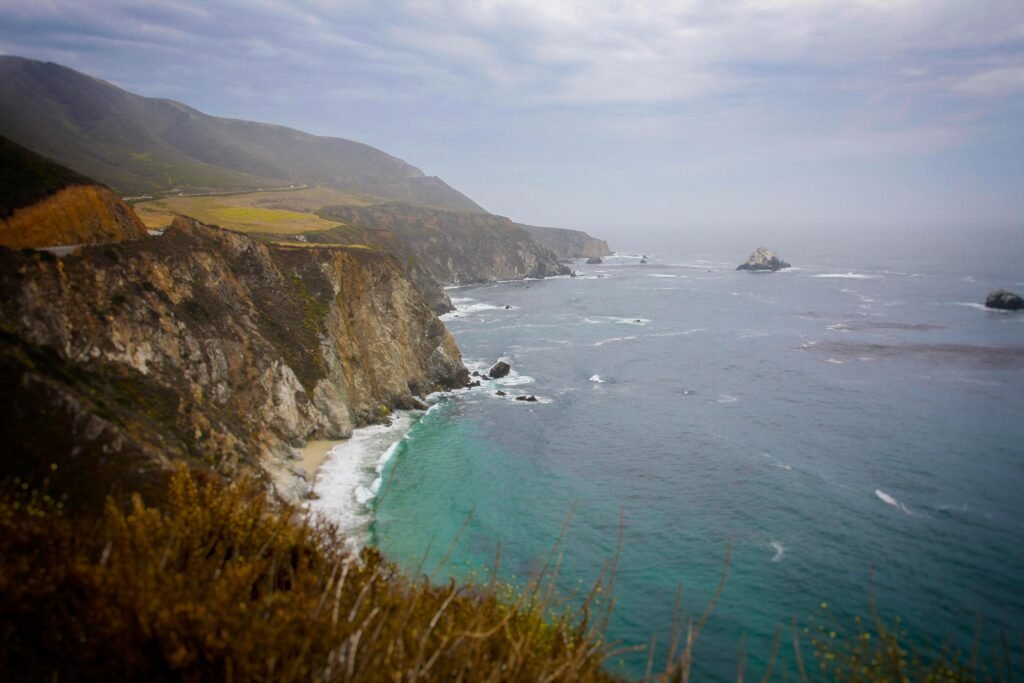
Introduction
Trestles, located on the coast of San Clemente, Southern California, is considered one of the most iconic surf destinations in North America. Famous for its consistently clean waves, multiple breaks, and laid-back surf culture, Trestles is the quintessential California surf spot—beloved by professional surfers, aspiring amateurs, and surf enthusiasts from around the world.
About Trestles
Trestles gets its name from the nearby railroad trestle bridge that surfers cross to access the waves. It’s nestled within San Onofre State Beach, a protected area with pristine coastline and abundant marine life, making Trestles both beautiful and environmentally significant.
What makes Trestles particularly special is its consistent, high-quality waves, resulting from the perfect combination of sand and cobblestone reefs, creating waves with exceptional shape and power.
Wave Characteristics at Trestles
Trestles comprises several distinct surf breaks, each with unique characteristics:
- Most Famous Spot: Recognized as one of the world’s best high-performance waves.
- Wave type: Long, consistent, A-frame peaks (left and right), ideal for radical maneuvers, progressive surfing, and aerials.
- Skill level: Intermediate to expert.
- Slightly north of Lowers, known for long right-hand walls.
- Wave type: Fast, playful, long right-handers, ideal for carving and performance surfing.
- Skill level: Intermediate to advanced surfers.
- North of Upper Trestles, near Richard Nixon’s former Western White House.
- Wave type: A left-hand point-break wave, known for long rides and less crowded conditions.
- Skill level: Intermediate to advanced.
- Located between Lower and Upper Trestles.
- Wave type: Fun A-frame peaks offering short, punchy rides.
- Skill level: Suitable for intermediate surfers looking for less crowded waves.
- Often less crowded and mellower than Lowers, providing long, fun rides perfect for intermediate surfers.
- At the southern end, near San Onofre’s main beach area.
- Wave type: Softer, user-friendly waves, ideal for beginners and longboarders.
Surf Conditions at Trestles
Trestles is celebrated for its consistent surf conditions, thanks to its exposed position along the Southern California coast:
- Year-round consistency: Receives consistent swells from multiple directions (south and southwest during summer, northwest during winter).
- Ideal Conditions: Best waves are usually from May to October, especially during the summer south swell season.
- Water Temperature: Cooler winter waters (around 14–17°C) require wetsuits, while summer water temperatures are warmer (20–24°C).
Competitions and Surfing Culture
Trestles has long been a key stop in professional surfing competitions:
- WSL Championship Tour: Hosted the prestigious Hurley Pro at Trestles for many years, featuring top surfers such as Kelly Slater, Filipe Toledo, and Carissa Moore.
- ISA World Surfing Championships: Hosted several international amateur events.
- Known for being a breeding ground for future surf talent, Trestles attracts a progressive, performance-oriented surf culture.
Surf Community & Environmental Stewardship
Trestles boasts a vibrant surf community dedicated to preserving its pristine environment and unique wave quality:
- Environmental Activism: The surf community famously fought and succeeded in preventing the construction of a freeway toll road that would have disrupted the local environment.
- Protected Area: Surrounded by natural habitat and marine life, making environmental awareness integral to the surfing culture.
Tips for Surfing Trestles
- Respect Locals and Crowds: Trestles is heavily surfed; patience and etiquette are crucial.
- Access: Requires a short hike or bike ride along a trail from the parking area; no direct vehicle access.
- Gear Recommendations: Bring a versatile shortboard suited to performance surfing. Wetsuits recommended year-round, varying thickness by season.
- Know the Lineup: Beginners should opt for Church, while experts focus on Lowers and Uppers.
Spectator Experience
- The bluffs above Trestles offer ideal viewing areas to watch the surf action, providing spectacular views of the surfers below.
- Binoculars, cameras, sunscreen, and refreshments are recommended, as there are no immediate amenities at the beach.
Famous Trestles Surfers
Trestles has cultivated some of the surfing world’s biggest names:
- Kelly Slater – 11-time World Champion, famous for historic victories and performances at Trestles.
- Kolohe Andino and Griffin Colapinto – Southern Californian surfers known for pushing performance boundaries at Lowers.
- Filipe Toledo – Known for his aerial surfing and high-performance maneuvers, multiple-time winner at Trestles competitions.
Conclusion
Trestles represents California surf culture at its finest, combining perfect waves, an environmentally conscious community, and a vibrant surf atmosphere. Whether you’re looking to challenge yourself with world-class waves or simply soak in the surf scene, Trestles provides an unforgettable surfing experience in a uniquely Californian setting.
7. Hossegor, France
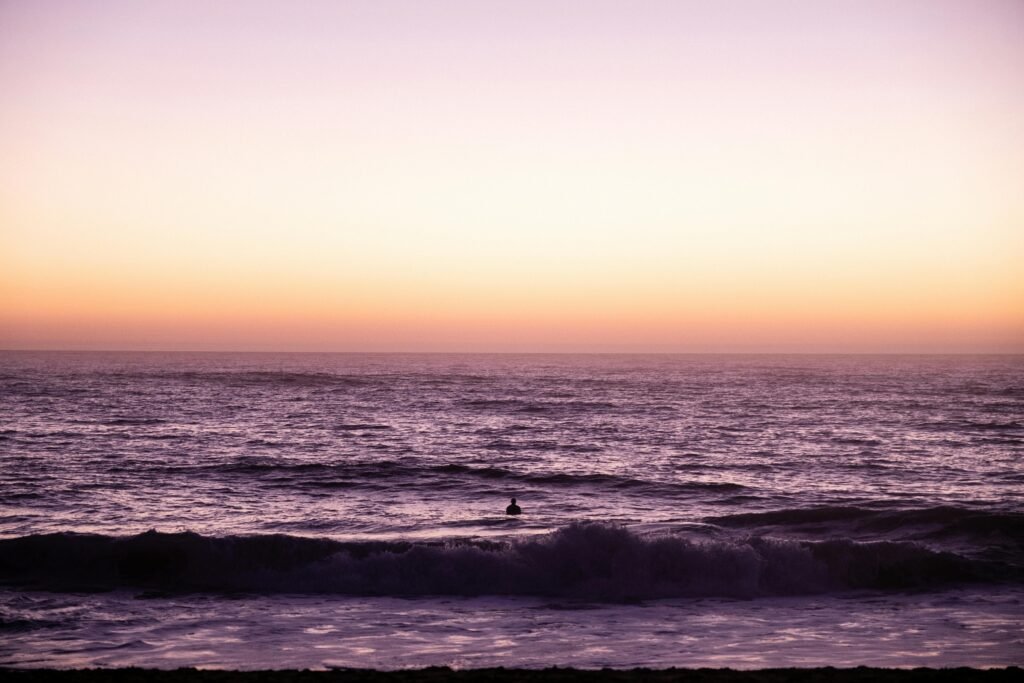
Introduction
Jeffreys Bay, Pipeline, and Teahupo’o may be world-famous, but Hossegor, located in the heart of the French Atlantic coast, is Europe’s premier surfing destination. Known internationally for its powerful, hollow beach breaks, laid-back surf culture, and picturesque scenery, Hossegor attracts professional surfers, amateurs, and beach enthusiasts from around the globe.
About Hossegor Surfing
Hossegor is situated along the beautiful stretch of coastline known as “Les Landes”, characterized by expansive sandy beaches and dense pine forests. Its unique geography creates exceptional sandbanks, consistently delivering powerful, barreling waves and making Hossegor the surfing capital of Europe.
Wave Characteristics of Hossegor
Hossegor is famous for its fast, hollow waves breaking over shifting sandbars. The town is known particularly for:
- Most iconic spot in Hossegor, known for its heavy, barreling waves reminiscent of Pipeline or Teahupo’o.
- Wave Type: Extremely powerful, hollow barrels ideal for experienced surfers.
- Skill level: Advanced to expert.
- Wave type: Known for big, powerful waves, especially in large swells.
- Suitable for intermediate-to-advanced surfers who enjoy challenging and intense surfing.
- Directly north of La Gravière.
- Offers consistent peaks with fast, barreling sections.
- Popular among experienced surfers for its reliable conditions.
- Slightly north, providing more manageable waves suitable for intermediate surfers.
- Offers a mix of hollow barrels and open-faced sections, often less crowded.
- Gentler beach breaks with more forgiving waves, perfect for beginners and intermediates.
- More consistent and sheltered, providing enjoyable surfing conditions year-round.
Surfing Seasons in Hossegor
The prime surf season at Hossegor typically occurs during autumn (September – November):
Autumn (September – November):
- Powerful swells from the North Atlantic deliver world-class barrels.
- Considered the best time for advanced surfers seeking big, clean waves.
Summer (June – August):
- Smaller waves, ideal for beginners and intermediates.
- Warmer water and weather, perfect for beach tourism and relaxed surfing.
Winter (December – March):
- Often large, stormy waves suited to experienced surfers comfortable with colder, heavy conditions.
Spring (April – June):
- Milder waves, often cleaner and more manageable, suitable for all skill levels.
Competitions and Surfing Events
Hossegor is famous for hosting prestigious international surfing competitions, notably:
WSL Quiksilver Pro France & Roxy Pro France:
- Part of the World Surf League Championship Tour, drawing the world’s best male and female surfers annually.
- Renowned for dramatic competitions in powerful beach break conditions.
European Junior Surfing Championships:
- Showcases rising surf talent from Europe and beyond.
Local Surf Culture
Hossegor offers an authentic, vibrant surfing lifestyle that blends the surf atmosphere with French elegance:
- Surf Shops and Brands:
- Home to flagship stores for iconic surf brands (Quiksilver, Billabong, Rip Curl, and more).
- Cafés and Restaurants:
- Surf-themed cafés, trendy bars, and French restaurants create a lively atmosphere perfect for post-surf relaxation.
- Beach Lifestyle:
- Miles of sandy beaches, ideal for chilling, watching sunsets, and immersing oneself in laid-back surf culture.
Tips for Surfing Hossegor
- Check the Sandbars Daily: Conditions at Hossegor constantly shift. Surf spots vary significantly based on tides and sandbanks.
- Wetsuit Required: Water temperatures range from 12°C (winter) to 22°C (summer), making wetsuits necessary year-round (4/3mm in winter, 2mm or short-sleeve in summer).
- Crowds & Etiquette: Hossegor can be crowded during peak season, so respecting surf etiquette and being patient is crucial.
Spectators & Visitors Experience
- Incredible Viewing Opportunities: Hossegor’s long beaches provide clear viewing of surfing action from shore.
- Festivals and Culture: Numerous events and festivals around surf competitions offer entertainment beyond surfing, including concerts and nightlife.
- Outdoor Adventures: Cycling, hiking, exploring local markets, and dining on exquisite local French cuisine are popular activities.
Famous Surfers at Hossegor
- Jeremy Flores (French surfer and local hero, famous for charging big waves at Hossegor).
- John John Florence, Gabriel Medina, and Kelly Slater – International champions who have delivered memorable performances at La Gravière.
Conclusion
Hossegor stands proudly as Europe’s premier surf destination, renowned for its powerful waves, vibrant culture, and stunning natural beauty. Whether seeking intense barrels at La Gravière, relaxing waves at Capbreton, or simply soaking up French coastal charm, Hossegor offers an exceptional surf experience unlike anywhere else in the world.
8. Cloudbreak, Fiji
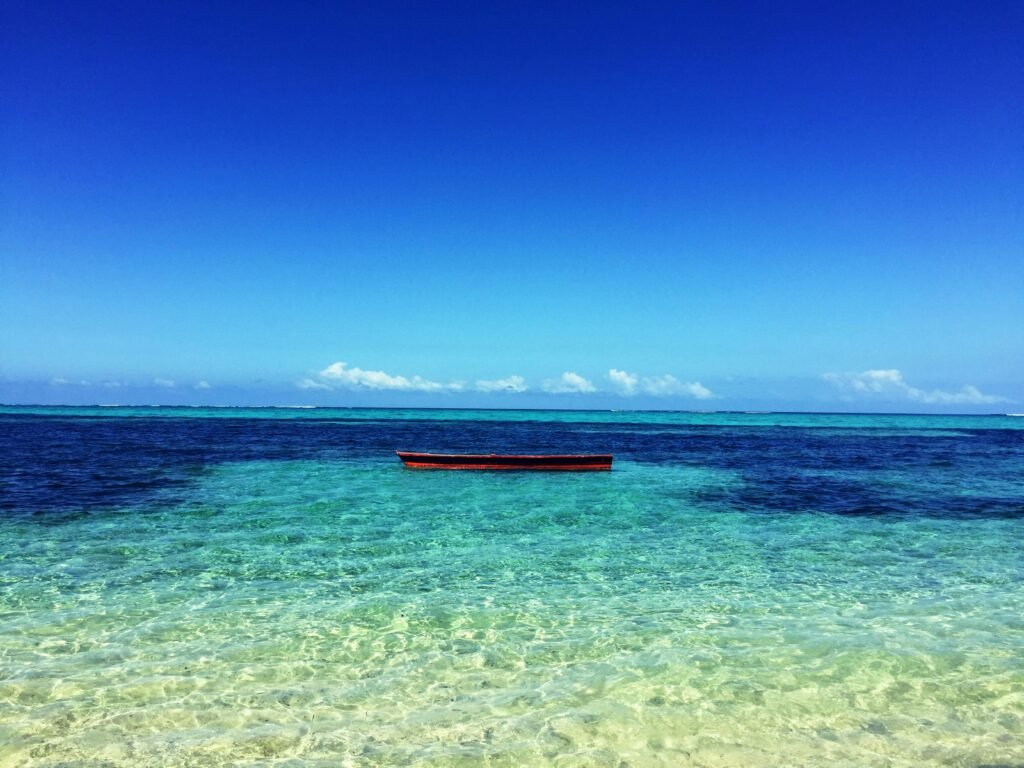
Introduction
Cloudbreak, located off the coast of Tavarua Island in Fiji, is widely regarded as one of the most impressive and challenging surf breaks in the world. Renowned for its massive, powerful, and beautifully hollow left-hand waves, Cloudbreak is legendary among surfers worldwide, offering an unparalleled experience for those brave enough to test their skills against the Pacific Ocean’s raw power.
History of Cloudbreak
Originally kept as a private surf spot exclusive to guests of the Tavarua Island resort, Cloudbreak became widely accessible in 2010, when Fijian laws changed to grant public access. Since then, Cloudbreak has become a magnet for professional surfers, big-wave enthusiasts, and passionate surfers eager to test their skills against one of surfing’s ultimate waves.
Wave Characteristics of Cloudbreak
Cloudbreak is famous for its consistency, power, and beauty, creating long, hollow barrels and steep walls ideal for high-performance surfing:
Left-hand reef break:
- Offers long, hollow barrels that can peel perfectly for hundreds of meters.
- Provides multiple sections, including hollow barrel rides, fast walls, and steep drops.
Powerful, Heavy Waves:
- Cloudbreak produces intense waves capable of holding substantial size, often reaching 10-25+ feet (3-8+ meters).
- The reef beneath is shallow, sharp, and demanding precision from surfers.
Multiple Sections:
- Inside Section: Known for intense, hollow barrels.
- Middle Section: Often provides longer, more manageable rides.
- Outer Reef: Holds huge swells, offering big-wave opportunities for the most experienced surfers.
Why Cloudbreak Is Legendary
Several factors make Cloudbreak a premier surfing location:
Perfect Shape and Barrels:
- Cloudbreak’s barrels are considered some of the finest on Earth—large, perfectly shaped, and crystal-clear.
Consistent Swell:
- Exposed to open Pacific Ocean swells, providing reliable surf conditions year-round.
Warm Tropical Waters:
- Fiji’s warm water (24–28°C) allows comfortable surfing without wetsuits, even in peak winter swells.
Best Surfing Seasons
Cloudbreak offers exceptional conditions throughout the year, with peak surfing season during:
Prime Season (April – October):
- Delivers large, powerful, and consistent southwest swells.
- Ideal months: May–September, featuring the largest and best waves.
Off-Peak Season (November–April):
- Smaller, more accessible waves, suitable for intermediate surfers seeking manageable conditions.
Competitions and Global Surfing Fame
Cloudbreak has hosted several prestigious international surfing competitions, enhancing its global reputation:
Fiji Pro (World Surf League, Championship Tour):
- A major stop on the WSL tour, famous for iconic performances by surfing greats such as Kelly Slater, Owen Wright, and Gabriel Medina.
- Memorable events include the massive “Thundercloud” swell in 2012, widely regarded as one of the most legendary surf sessions in history.
Big Wave Sessions:
- Cloudbreak is famous for massive waves in special “code red” conditions, attracting elite big-wave surfers worldwide.
Local Surf Culture
Cloudbreak, although internationally famous, maintains deep cultural ties to Fijian tradition:
Respectful Surf Atmosphere:
- Surfers visiting Cloudbreak embrace a culture of respect toward locals, fellow surfers, and the marine environment.
- Tavarua Island itself exudes a relaxed, friendly atmosphere, making visitors feel welcome while emphasizing the respect for traditional Fijian customs.
Environmental Conservation:
- Strong local commitment to preserving reefs, marine life, and pristine surroundings.
Tips for Surfing Cloudbreak
- Know Your Limits:
- Cloudbreak is challenging; only intermediate-to-expert surfers should attempt it during sizeable conditions.
- Equipment:
- Bring step-up surfboards suitable for large, powerful waves, typically between 6’6” to 7’6”.
- Safety Gear:
- Helmets, reef booties, and impact vests are recommended for protection against the reef.
- Respect Locals and Surf Etiquette:
- Sharing waves, respecting local surfers, and demonstrating patience are critical in the lineup.
Spectators and Non-Surfing Visitors
- Boat Viewing:
- Observing from boats is the best way to safely watch surfers ride massive waves up close.
- Resort Amenities:
- Tavarua Island and nearby resorts offer luxurious accommodations, tropical scenery, and activities such as snorkeling, diving, fishing, and exploring Fiji’s culture.
Famous Surfers at Cloudbreak
Many surfing legends have conquered Cloudbreak, including:
- Kelly Slater – Consistently demonstrates mastery at Cloudbreak, with several memorable performances.
- John John Florence – Known for impressive barrel-riding skills in heavy Cloudbreak conditions.
- Laird Hamilton & Shane Dorian – Iconic big-wave surfers who took on huge Cloudbreak swells, raising global surf awareness.
Conclusion
Cloudbreak, Fiji, is a dream surf destination, boasting a magical blend of tropical beauty, exceptional waves, and thrilling surf experiences. It remains a symbol of adventure, power, and surfing excellence—truly one of the most respected waves on the planet. For surfers chasing perfect, heavy barrels in paradise, Cloudbreak is undoubtedly one of surfing’s greatest treasures.
9. Chicama, Peru
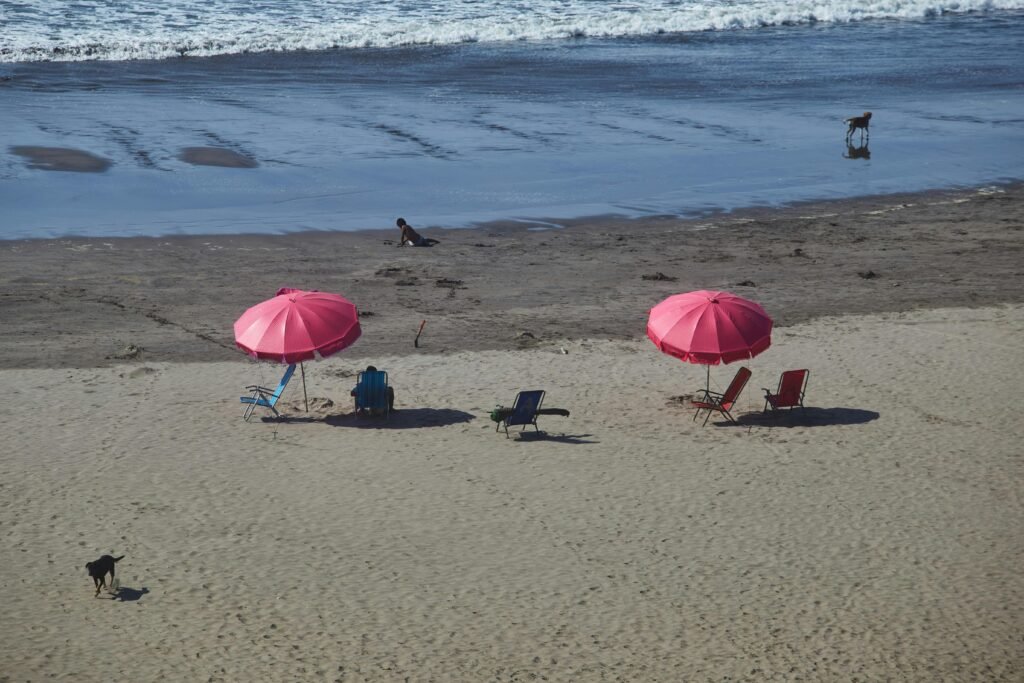
Introduction
Chicama, located on the northern coast of Peru, near the small fishing town of Puerto Malabrigo, is internationally renowned for having the longest left-hand wave on the planet. Known for its incredibly long, mellow waves that can offer rides up to 2 kilometers (1.2 miles) in length, Chicama attracts surfers worldwide seeking the ultimate surfing experience and adventure.
History and Discovery
Chicama’s wave was first brought to global attention in the 1960s, when traveling surfers discovered this unique break hidden along Peru’s barren desert coastline. Today, Chicama stands as one of the surfing world’s bucket-list destinations, drawing international surf travelers eager to experience its extraordinary length and perfection.
Wave Characteristics at Chicama
Chicama’s fame lies in its exceptionally long, perfectly shaped left-hand point break, breaking along multiple sections:
Wave Type:
- Consistent, smooth, long left-hand waves, known for gentle but perfectly peeling conditions.
- Offers endless opportunities for maneuvers, cutbacks, and relaxed cruising.
Sections of Chicama:
- El Cape (The Cape) – The top section of the point, ideal for faster, more powerful rides.
- El Point – Most consistent section, providing long, perfectly shaped rides.
- Las Dos Tetas – Middle section offering smooth and continuous waves.
- El Hombre (The Man) – Lower section, slower and mellow, perfect for beginners and longboarders.
Ride Length:
- On good swell days, rides at Chicama can easily exceed 1–2 kilometers, allowing surfers an unforgettable surfing experience.
What Makes Chicama Unique?
Longest Waves in the World:
- Unmatched wave length offering rides lasting several minutes.
- Ideal conditions for refining technique and enjoying a relaxed, rhythmic surf experience.
Consistent Conditions:
- Reliable swells, particularly from April to October, create regular opportunities for surfers.
- Gentle offshore winds help maintain perfect, clean wave faces.
Scenic Environment:
- Stunning coastal desert landscapes provide a dramatic backdrop to this world-famous surf spot.
Surfing Seasons at Chicama
Prime Season (April – October):
- Best time of year, bringing consistent southwest swells.
- Offers the longest rides, often multiple sections linking together perfectly.
- Cooler water temperatures around 17–20°C (63–68°F); wetsuits required.
Off-Peak Season (November – March):
- Smaller, less consistent waves, but warmer weather.
- Suitable for beginners and intermediate surfers.
Surfing Skill Level
- Chicama is suitable for surfers of all skill levels:
- Beginners enjoy mellow sections of the wave to improve technique.
- Intermediate and Advanced surfers find endless opportunities to perform maneuvers, carve turns, and enjoy extended rides.
Tips for Surfing Chicama
- Longboard or Mid-length Recommended:
- Ideal wave for longboards or fish-style boards to maximize ride length and enjoyment.
- Fitness is Important:
- Due to extremely long rides, surfers should be physically prepared for long paddles or extended rides.
- Use Boats or Jet Skis for Convenience:
- Many surfers use local boats or jet skis to transport back to the lineup quickly, maximizing the number of rides per session.
- Protective Gear:
- Wetsuits (3/2mm or 4/3mm) are recommended year-round due to cool water temperatures.
- Sunscreen essential due to intense desert sun exposure.
Local Surf Culture & Amenities
- Chicama has maintained a relaxed, authentic Peruvian fishing-town vibe, mixed with a friendly surf community.
- Accommodations range from basic hostels to luxury surf resorts specifically catering to visiting surfers.
- Local cuisine, especially fresh seafood dishes like ceviche, adds to the appeal of visiting Chicama.
Environmental Awareness
- Chicama is becoming increasingly recognized as a destination where environmental preservation is crucial.
- Locals and surfers actively encourage sustainability, clean beaches, and ocean conservation to maintain the wave’s pristine conditions.
Spectators and Non-Surfing Visitors
- Stunning coastal viewpoints offer excellent locations for photographing surfers riding Chicama’s iconic waves.
- Nearby cultural attractions, historical sites, archaeological remains, and scenic landscapes provide additional activities for non-surfers.
Conclusion
Chicama, Peru, stands out uniquely in the surfing world as the home of the longest surfable left-hand wave globally. Combining endless waves, breathtaking desert landscapes, warm local culture, and an authentic surf atmosphere, Chicama promises an unparalleled surfing experience—one every surfer dreams of at least once in a lifetime.
10. Raglan, New Zealand
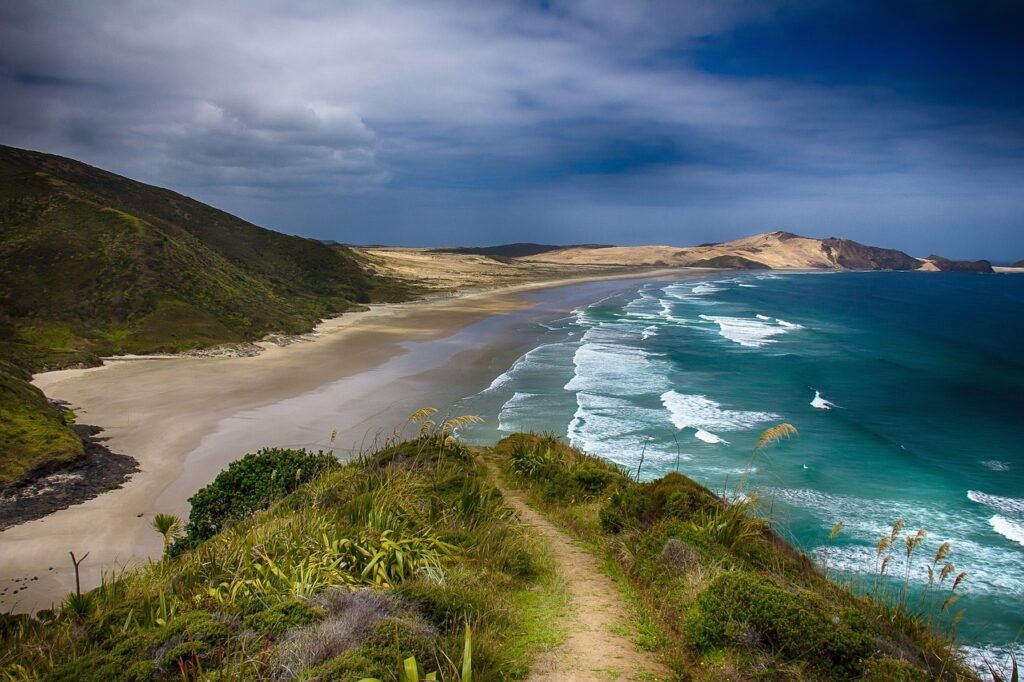
Introduction
Raglan, located on the picturesque west coast of New Zealand’s North Island, is renowned globally as one of the world’s best surf destinations. Famous for its incredibly long, consistent, and perfectly peeling left-hand point breaks, Raglan offers a combination of outstanding surfing conditions, laid-back lifestyle, and spectacular natural beauty.
History of Raglan Surfing
Raglan first gained international attention in the 1966 surfing movie “The Endless Summer”, which famously showcased its perfect, long, peeling left-hand waves. Ever since, Raglan has been an iconic surf spot, drawing surfers worldwide, seeking both classic surf and an authentic Kiwi surf culture experience.
Wave Characteristics at Raglan
Raglan boasts three world-famous point breaks, each with unique features and suited to different surfing styles:
- Most iconic and popular break at Raglan, featured in “The Endless Summer.”
- Wave type: Long, consistent left-handers providing exceptionally long rides—often over 300 meters.
- Skill level: Suitable for intermediate to advanced surfers, offering plenty of opportunities for high-performance turns, barrels, and cutbacks.
- Further out from Manu Bay, Indicators produces longer, faster, more powerful waves.
- Wave type: Long, peeling lefts with hollow sections and more challenging take-offs.
- Skill level: Advanced surfers, especially during large swells, due to more exposed and powerful conditions.
- Located between Indicators and Manu Bay, Whale Bay offers a gentler, slower wave compared to Indicators.
- Wave type: Softer, mellow left-hand wave ideal for longboarding and intermediate surfers seeking cruisy, enjoyable rides.
- Ngarunui Beach: A long sandy beach ideal for beginners, surf schools, and more relaxed surfing.
- Ruapuke Beach: Remote beach break south of Raglan, offering quieter surf conditions.
Surfing Conditions & Seasons
Raglan’s surfing conditions benefit from its west-facing coastline, receiving consistent swells from the Tasman Sea year-round:
Best Surf Season (March–November):
- Regular and consistent swell, often producing epic waves.
- Winter months (June–August) offer powerful, clean waves with strong offshore winds.
Summer Season (December–February):
- Milder conditions with smaller, enjoyable waves suitable for beginners and casual surfing.
- Warmer water and pleasant weather enhance surf tourism.
Water Temperature:
- Typically cooler (14–19°C), wetsuits (3/2mm or 4/3mm) recommended year-round.
What Makes Raglan Special
- Longest Left-Hand Waves:
- Raglan’s Manu Bay and Indicators provide some of the longest rides in the Southern Hemisphere, allowing surfers a truly exceptional surfing experience.
- Stunning Natural Scenery:
- Surrounded by lush green hills, rugged cliffs, and beautiful black-sand beaches, Raglan offers breathtaking landscapes.
- Vibrant Local Surf Culture:
- Friendly locals, surf shops, vibrant cafés, art galleries, and community events create an inviting atmosphere for visitors and surfers alike.
Local Surf Culture & Community
Raglan embraces surf culture deeply, fostering sustainability, environmental consciousness, and authentic Kiwi hospitality:
- Environmental Awareness:
- Strong emphasis on sustainability, ocean conservation, and beach cleanup initiatives.
- Community Vibe:
- Locals pride themselves on a welcoming atmosphere, blending surfing traditions with artistic and alternative lifestyles.
Surf Competitions & Events
Raglan regularly hosts local, national, and occasionally international surf competitions:
- Rip Curl Raglan Pro – A prestigious national event attracting top New Zealand surfers.
- Regular local surfing competitions fostering grassroots surf talent.
Tips for Surfing Raglan
- Wave Selection:
- Beginners head to Ngarunui Beach; experienced surfers challenge themselves at Indicators or Manu Bay.
- Respect the Locals:
- Courtesy and patience in the water ensure a positive surf experience.
- Gear:
- Suitable boards range from high-performance shortboards (Indicators) to cruisy longboards (Whale Bay). A wetsuit is essential due to cooler waters.
Non-Surfing Activities
Raglan offers plenty of activities for non-surfers or post-surf downtime:
- Adventure & Outdoor: Hiking trails, mountain biking, kayaking, fishing, and stand-up paddleboarding.
- Culture & Dining: Art galleries, organic cafes, boutique shops, farmers markets, and live music events.
Conclusion
Raglan, New Zealand, stands out as a legendary surfing destination that perfectly combines world-class waves, stunning natural beauty, authentic local culture, and welcoming community spirit. Whether chasing the perfect left-hand ride at Manu Bay or enjoying Raglan’s laid-back lifestyle, visitors find a surfing experience that is truly unforgettable and distinctly Kiwi.
